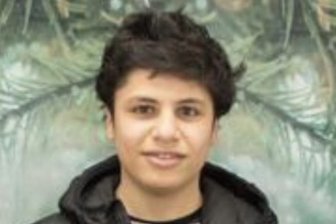Space exploration is fascinating enough on its own, but it’s never been as engaging for people here on Earth as it has been for the past five months.

Canadian astronaut Cmdr. Chris Hadfield’s time on board the International Space Station will be remembered for his snapshots from space, science lessons from the stars and his ongoing interaction with his hundreds of thousands of social media followers.
And, of course, the cover of David Bowie’s “Space Oddity” that won’t soon be forgotten.
For 144 days on board the ISS, his return to Earth marked the end of a shared adventure in space – a journey people got to take part in, in a way they hadn’t ever before.
Global News Asia Correspondent Paul Johnson and cameraman Nicolas Bock were the only North American journalists to have travelled to the remote Kazakhstan landing site, where Hadfield and his space station compatriots (Russian cosmonaut Roman Romanenko and U.S. astronaut Thomas Marshburn) touched down in a Soyuz spacecraft the morning of May 14.
WATCH: Cmdr. Hadfield’s son looks back at father’s time in space
Johnson has covered a number of space landings and has met many of Canada’s exceptional astronauts.
But, even he admits that Hadfield’s story is exceptional.
Read More: A look at Chris Hafield, the Canadian who made space cool
When Johnson and Bock learned the Soyuz landing was coming up, they knew they had to find a way to get there, no matter how arduous a journey it would be.
Bock said it was a risky gamble because the area is so remote – about a 680 kilometre mostly off-road drive southeast from the city of Karaganda, a further 200 kilometres if travelling from the capital city of Astana.
“But that was a case of no guts, no glory,” he said.
So, after jumping through the diplomatic hoops to get last-minute entry visas to the country — and travelling by planes, trains and automobiles — they made their way to the expected landing site.
“The drive out there was one of the most gut-wrenching, back-breaking, thrilling journeys that I’ve ever been on,” Johnson said. “Eventually we got to the point where we were just driving through the steppe.”
They drove through dried-up lake beds. Their car broke down, suffered a flat tire and even they had to scavenge for gas in an isolated, almost abandoned village.
But, they made it to where they believed they could get the best glimpse of the Soyuz floating back to Earth.

Bock admits they were worried they had the right spot and that any number of factors could have made them miss the landing.
Bright and early in the morning on May 14 – after sleeping on the ground in chilling temperatures in a makeshift tent – they saw signs of the operation but had to set off on a “cat and mouse” space-capsule chase.
Right on time, at 8:31 a.m. local time, the Soyuz touched down and Johnson and Bock were there.
Back in Beijing, the pair put together a short documentary (above) about their journey and what it meant to be there for “one of the biggest thrills” of their careers.


Comments